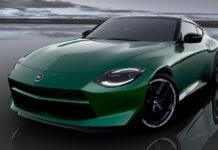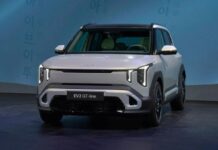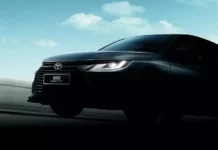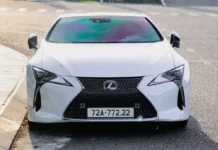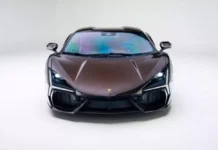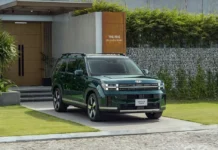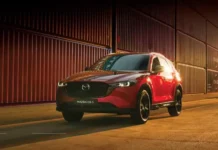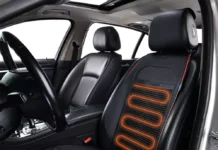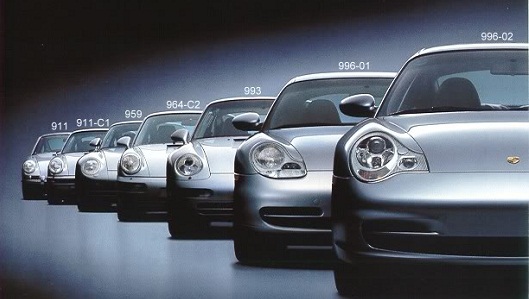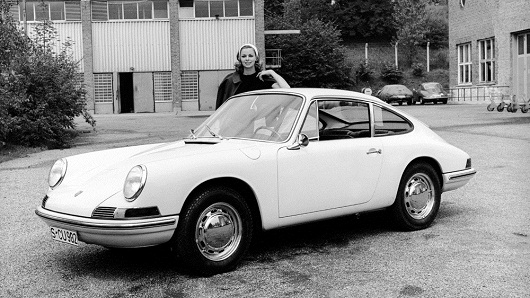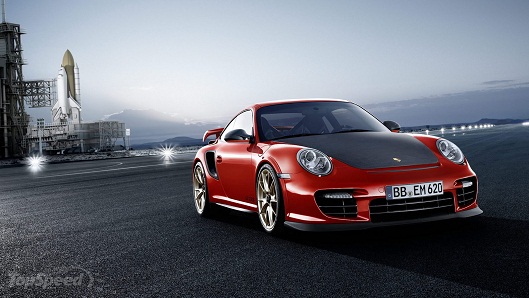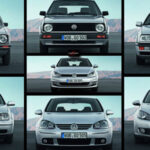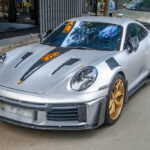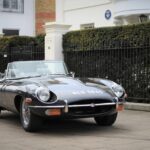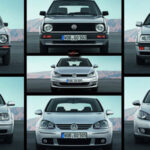The 911, after a decade of existence, remains an icon and the soul of the Porsche brand. Few cars in the world can be compared to the 911 in terms of its rich history and the continuity of its vehicle line.
>> 50 years of inspiration with Porsche 911
The first 911 (introduced in 1963) – the beginning of a legend
Continuing the success of the Porsche 256, the 911 generation won the hearts of sports car enthusiasts from the very first glance. The first prototype was unveiled in 1963 at the Frankfurt Motor Show (IAA) under the name 901 and later renamed the 911, officially entering the market in 1964.
With a horizontally opposed 6-cylinder air-cooled engine producing 130 horsepower, the car could reach a top speed of 210 km/h. If you’re looking for a generation of cars with slightly lower speeds, try the Porsche 912 with a 4-cylinder engine. In 1966, Porsche introduced the 911 S with a 160-horsepower engine and alloy wheels from Fuchs.
The next generation to mention is the 911 Targa with its characteristic stainless steel roll bar, introduced in 1966, and the first safety convertible coupe in the world. The 4-speed Sportomatic semi-automatic transmission was designed and integrated starting in 1967. With the 911T of the same year, followed by the E and S models, Porsche became the first German carmaker to meet strict US emission regulations. The 911 became even more powerful as the cylinder displacement improved significantly, from 2.2 liters in 1969 to 2.4 liters in 1971.
The 911 Carrera RS 2.7, introduced in 1972 with a 210-horsepower engine and weighing less than 1 ton, remains a dream car icon to this day. The “ducktail” of the car is the first rear spoiler on a production vehicle.
The G-Series (introduced in 1973) – The second generation
Ten years after the birth of the legendary model, Porsche engineers took the 911 to new heights. The G version was produced from 1973 to 1989, longer than any previous 911 models. The car was designed with a prominent rear bumper, a special innovation to meet stringent US safety standards.
The seats in the car are equipped with three-point seat belts and comfortable headrests as standard equipment. Returning to the iconic 911 generations, one of the memorable milestones is the birth of the 911 Turbo with a 3-liter engine delivering 260 horsepower and a large rear spoiler. With its outstanding design, luxury and performance features, this model seems to have shone the spotlight on the Porsche brand.
The next step came in 1977 with the 911 Turbo 3.3-liter model with a unique cooling system. The car can deliver performance up to 300 horsepower. In 1983, the 911 Carrera officially replaced the previous versions. With a 3.2-liter engine delivering 231 horsepower, the car became a passion and a great desire for car collectors.
The Cabriolet version was introduced in 1982 to meet the needs of convertible enthusiasts. Finally, the 911 Carrera Speedster was born in 1989, a model developed from the legendary 356 prototype of the 1950s.
The 964 (introduced in 1988) – A combination of classic and modern style
When car experts predicted the end of an era, Porsche introduced the 911 Carrera 4 (Model 964) in 1988.
After almost 15 years of production, the 911 generation was refreshed by 85%, ensuring Porsche had modern cars that kept up with trends. The horizontally opposed 3.6-liter engine with air cooling provided 250 horsepower, still the heart of technology.
In terms of exterior design, the 964 model differs slightly from its predecessors with its aerodynamic shape and self-adjusting rear spoiler. The interior is a completely different story. The new model is designed to provide a sporty yet comfortable driving experience.
The car has an ABS anti-lock braking system, Tiptronic transmission, power steering, and combined airbags with a completely redesigned chassis featuring lightweight aluminum joints and coil springs instead of the previous torsion bar suspension system. It can be said that the 911 Carrera 4 with all-wheel drive is one of the significant leaps of the 911 series since its launch.
In addition to versions like the Carrera Coupe, Cabriolet, and Targa, from 1990 customers could also order the 964 Turbo. With an upgraded engine from 3.3 liters to 3.6 liters, the car can deliver up to 360 horsepower. Today, the 964 Carrera RS, 911 Turbo S, or 911 Carrera 2 Speedster are still sought after by car collectors.
The 993 (introduced in 1993) – The last air-cooled versions
The 911 model with the internal code name 993 continues to be the only true love of many seasoned Porsche drivers. The main contributor to this is its excellent design. The van-shaped headlights with distinct light points on the front cover are a familiar image for previous 911 models, but that’s not all with the 993.
The 993 model quickly gained a reputation for its absolute reliability. Also very quickly, the next generation of cars with aluminum frames appeared. This Turbomodel was the first petrol-driven car to feature a variable turbo with variable vanes, minimizing emissions compared to other cars of the time. The hollow aluminum rims – an innovation seen only on this special Turbo model.
There is also the 911 GT2 for speed enthusiasts who want to experience the intense power of the engine. The electrically operated roof window under the car’s roof is another new feature on the 911 Targa model. However, what Porsche lovers remember most about the 993 generation produced from 1993 to 1998 is that it was the last air-cooled version of the 911.
The 996 (introduced in 1997) – Water-cooling system
The car model with internal code 996 began production in 1997 and ended in 2005, representing the most significant technological change in the history of the 911. It retains all the most interesting characteristics of previous versions but is a completely new and unique car. The reason lies in its distinctive water-cooling system. Thanks to the inline 4-cylinder engine, the car can deliver up to 300 horsepower and breaks records for fuel efficiency, reduced emissions, and noise.
The exterior design still features the typical lines of the 911, but with a low drag coefficient of 0.3 cW. The lines of the 996 are an exquisite combination with the successful Boxster convertible sports car. The integrated headlights with turn signals have caused much debate but have been copied by many other car brands.
In the cockpit, the driver can enjoy a completely new space. Comfort is crucial and not compromised for sports features. Overall, the 996 has brought Porsche a revolution with many new innovations in a car line. The 911 GT3 model became a highlight of the 911 series from 1999, preserving the cherished values of the Carrera RS generation. The 911 GT2 was the first car equipped with ceramic brakes as standard and was promoted to the market as an outstanding sports car in the fall of 2000.
The 997 (introduced in 2004) – Classic and modern side by side
In July 2004, Porsche introduced the new 911 Carrera and Carrera S of the 997 generation, with an internal code number of 997. The oval-shaped headlights with distinctive point lights on the front spoiler are a familiar image of previous 911 models, but that’s not all with the 997.
The 3.6-liter engine delivers 325 horsepower, while the Carrera S version is even more powerful with a 3.8-liter engine delivering 355 horsepower. The chassis also undergoes significant improvements with Porsche’s Active Suspension Management system (PASM) as standard equipment. In 2006, Porsche introduced the 911 Turbo to the market, the first gasoline-powered car to be equipped with a turbocharger with variable turbine ar vanes.
In the fall of 2008, the 997 was upgraded with direct fuel injection and a dual-clutch transmission. The 911 family has never had such a wide range of options for customers, from models like Carrera, Targa, and rear-wheel drive or all-wheel drive to Turbo, GTS, special editions, and road-going versions of GT racing models. In total, the 911 “family” has 24 different members.
The 991 (introduced in 2011) – Changes for a practical experience
The 991 model represents the biggest technological leap ever seen in the 911 series.
Continuing the values of the iconic sports car over many decades, the new 911 generation takes the car’s performance and capabilities to a new level. The completely redesigned suspension system with a longer wheelbase, wider chassis, larger wheels, and scientifically designed interior all contribute to a sportier driving experience and increased comfort. Technically, the 911 embodies Porsche’s philosophy of “Intelligent Performance” – consuming less fuel while maintaining high performance. This is explained by the 3.4-liter engine in the base Carrera version (providing more than 5 horsepower compared to the 997/II model) and the combination structure of iron and aluminum to significantly reduce the weight of the car.
Other improvements include Porsche Dynamic Chassis Control (PDCC) and the world’s first 7-speed manual transmission. The design of the 991 meets the highest market demands. The elongated and flat silhouette, interesting lines, and precisely designed details make the 7th generation Porsche 911 Carrera distinguishably successful and continue to be the epitome of sports car design. Until the next generation appears, the 991 will still be the most perfect generation in the 911 series – the pride and symbol of Porsche worldwide.
Hoang Tuan (TTTD)


